I implemented the binarization of the first paper in like 10 minutes (less time than processing the 2nd image) - no guarantee that it's correct, better have a look at the formulas yourself:
int main()
{
//cv::Mat input = cv::imread("../inputData/Lenna.png");
cv::Mat input = cv::imread("../inputData/LongLineColor.jpg");
cv::Mat gray;
cv::cvtColor(input,gray,CV_BGR2GRAY);
cv::Mat binaryImage = cv::Mat::zeros(gray.rows, gray.cols, CV_8UC1);
// binarization:
// TODO: adjust to your application:
int smallWindowSize = 17; // suggested by the paper
int bigWindowSize = 35; // suggested by the paper
// TODO: adjust to your application
double minTau = 10 ;
// create roi relative to (0,0)
cv::Rect roiTemplate1 = cv::Rect(-smallWindowSize/2,-smallWindowSize/2, smallWindowSize, smallWindowSize);
cv::Rect roiTemplate2 = cv::Rect(-bigWindowSize/2,-bigWindowSize/2, bigWindowSize, bigWindowSize);
cv::Rect imgROI = cv::Rect(0,0, gray.cols, gray.rows);
for(int y=0; y<gray.rows; ++y)
{
std::cout << y << std::endl;
for(int x=0; x<gray.cols; ++x)
{
double pixelThreshold = 255;
// small roi
cv::Rect cROIs = roiTemplate1 + cv::Point(x,y);
// test whether ROI is inside the image. Reduce otherwise:
cROIs = cROIs & imgROI;
if(cROIs.width == 0 || cROIs.height == 0)
continue; // ignore this pixel
// large roi
cv::Rect cROIl = roiTemplate2 + cv::Point(x,y);
cROIl = cROIl & imgROI;
if(cROIl.width == 0 || cROIl.height == 0)
continue; // ignore this pixel
cv::Mat subSmall = gray(cROIs);
cv::Mat subLarge = gray(cROIl);
// evaluate subimages:
// standard deviations
double stdDevS =0;
double stdDevL =0;
// mean value
double meanS =0;
double minL =DBL_MAX;
double meanL =0;
// mean of small region
for(int j=0; j<subSmall.rows; ++j)
for(int i=0; i<subSmall.cols; ++i)
{
meanS += subSmall.at<unsigned char>(j,i);
}
meanS = meanS/ (double)(subSmall.cols*subSmall.rows);
// stddev of small region
for(int j=0; j<subSmall.rows; ++j)
for(int i=0; i<subSmall.cols; ++i)
{
double diff = subSmall.at<unsigned char>(j,i) - meanS;
stdDevS += diff*diff;
}
stdDevS = sqrt(stdDevS/(double)(subSmall.cols*subSmall.rows));
// mean and min of large region
for(int j=0; j<subLarge.rows; ++j)
for(int i=0; i<subLarge.cols; ++i)
{
if(subLarge.at<unsigned char>(j,i) < minL)
{
minL = subLarge.at<unsigned char>(j,i);
meanL += subLarge.at<unsigned char>(j,i);
}
}
meanL = meanL/ (double)(subLarge.cols*subLarge.rows);
// stddef of large region
for(int j=0; j<subLarge.rows; ++j)
for(int i=0; i<subLarge.cols; ++i)
{
double diff = subLarge.at<unsigned char>(j,i) - meanL;
stdDevL += diff*diff;
}
stdDevL = sqrt(stdDevL/(double)(subLarge.cols*subLarge.rows));
// formula (2)
double tau = ((meanS - minL) * (1-stdDevS/stdDevL))/2.0;
// minimum
if(tau < minTau) tau = minTau;
// formula (1)
double Threshold = meanS - tau;
// for debugging:
/*
std::cout << " meanS:" << meanS << std::endl;
std::cout << " std S:" << stdDevS << std::endl;
std::cout << " min L:" << minL << std::endl;
std::cout << " meanL:" << meanL << std::endl;
std::cout << " std L:" << stdDevL << std::endl;
std::cout << " threshold: " << Threshold << std::endl;
*/
unsigned char pixelVal = gray.at<unsigned char>(y,x);
if(pixelVal >= Threshold)
binaryImage.at<unsigned char>(y,x) = 255;
else
binaryImage.at<unsigned char>(y,x) = 0;
}
}
cv::imshow("input", input);
cv::imshow("binary", binaryImage);
//cv::imwrite("../outputData/binaryCustom.png", binaryImage);
cv::waitKey(0);
return 0;
}
giving me these results:


and


It is very slow but not optimized or encapsulated at all ;)
And the results aren't sooo good imho. Probably you have to adjust the windowSizes to your application/task/objectSize



